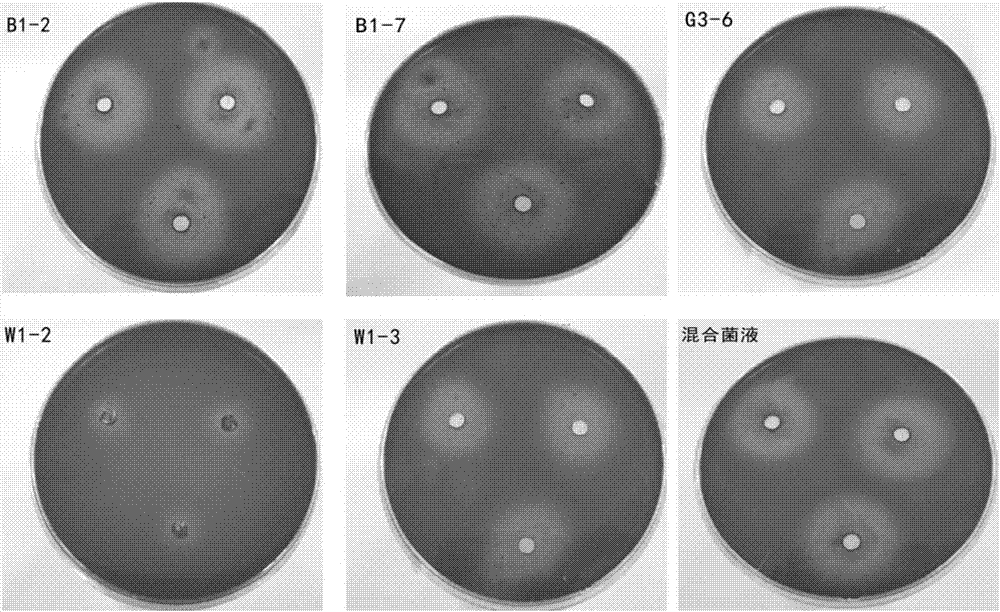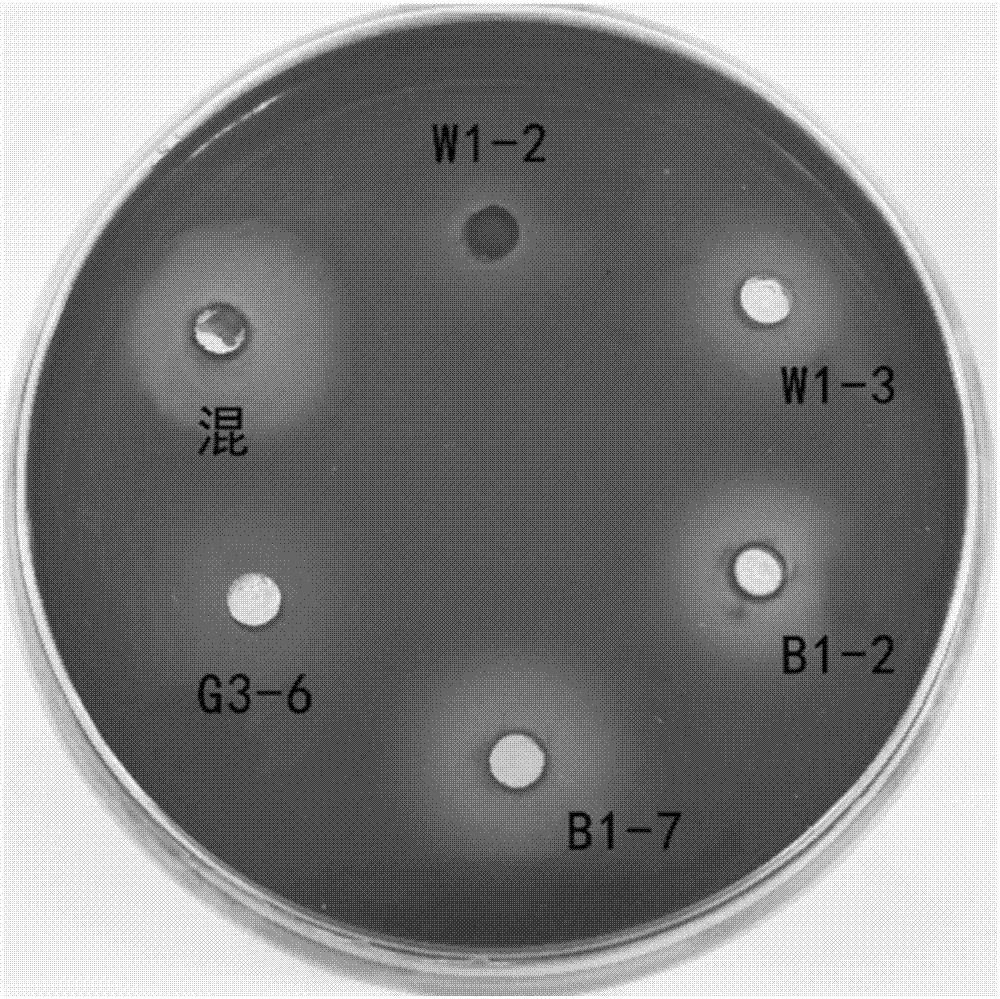Composite microbial agent used for degradation of garden waste, and preparation method and application thereof
A compound microbial agent and garden waste technology, applied in the direction of microorganism-based methods, biochemical equipment and methods, microorganisms, etc., can solve the problems of pathogenic bacteria and heavy metal pollution, difficult to remove, etc.
- Summary
- Abstract
- Description
- Claims
- Application Information
AI Technical Summary
Problems solved by technology
Method used
Image
Examples
Embodiment 1
[0036] Example 1 Preparation of composite microbial agent of the present invention
[0037] 1.1 Preparation of liquid medium
[0038] The composition and ratio of the liquid medium used in the present invention are as follows: potato 20%, sucrose 1%, glucose 1%, tryptone 0.3%, yeast extract 0.3% and the balance of water. After washing the potato, cut into pieces, press Proportionally add clean water (200g / 1L), boil, filter, add other components to the filtrate and make up the corresponding amount of water, adjust the pH to 6.8, and sterilize at 121°C for 20 minutes.
[0039] 1.2 Preparation of compound bacterial liquid
[0040] Bacillus subtilis CICC10088, Bacillus licheniformis CICC10095, Bacillus siamensis BNCC210681 and Bacillus tequilensis CICC10832 were selected and single colonies were inoculated into the liquid medium prepared in 1.1 at 37℃. Cultivate at 130r / min for 24 hours; inoculate Phanerochaete chrysosporium (fungi) CICC40719 in liquid medium, cultivate at 30℃, 130r / min ...
Embodiment 2
[0049] Example 2 Degradation laboratory experiment of the composite microbial agent of the present invention
[0050] 2.1 Cellulose Congo red medium degradation circle experiment
[0051] Four strains of Bacillus subtilis CICC10088, Bacillus licheniformis CICC10095, Bacillus siamese BNCC210681, and Bacillus tequila CICC10832 were respectively inoculated into the liquid medium prepared in 1.1 in Example 1, at 37°C and 130 r / min Cultivate for 24 hours; inoculate Phanerochaete chrysosporium BNCC210681 in another liquid medium prepared in 1.1 in Example 1, and cultivate for 48 hours at 30°C and 130 r / min.
[0052] After fermentation, each bacterial strain was inoculated into the same liquid medium for co-cultivation, the inoculum amount of each strain was 1% (v / v), and the bacterial liquid of Phanerochaete chrysosporium was separately inoculated into the liquid medium. It is 2% (v / v). After the inoculation, the two liquid media were fermented for another 24 hours at 45°C and 130r / min. ...
Embodiment 3
[0062] Example 3 Degradation experiment of composite microbial agent of the present invention
[0063] 3.1 Experimental materials and procedures
[0064] The composting material used in this embodiment is a composite of various plant dead leaves, which comes from Wanshou Park, Xicheng District, Beijing. The dead leaves are collected and crushed. The average size of the leaves is 0.5cm×0.5cm.
[0065] Set up the blank group CK and the experimental group X, and each group has three parallel experiments. The mass of the dead leaves of each group is uniformly 200kg, and the volume is about 0.8m 3 , The initial water content is 8.32%, and the initial pH is about 7.7. The experimental group inoculated the composite microbial inoculum prepared in Example 1 into the dead leaf pile of group X according to the inoculation amount of 1:12, and the blank control group was added with the same amount of sawdust, mixed and stirred evenly, and adjusted the final moisture content of the two groups o...
PUM
 Login to View More
Login to View More Abstract
Description
Claims
Application Information
 Login to View More
Login to View More - R&D
- Intellectual Property
- Life Sciences
- Materials
- Tech Scout
- Unparalleled Data Quality
- Higher Quality Content
- 60% Fewer Hallucinations
Browse by: Latest US Patents, China's latest patents, Technical Efficacy Thesaurus, Application Domain, Technology Topic, Popular Technical Reports.
© 2025 PatSnap. All rights reserved.Legal|Privacy policy|Modern Slavery Act Transparency Statement|Sitemap|About US| Contact US: help@patsnap.com



